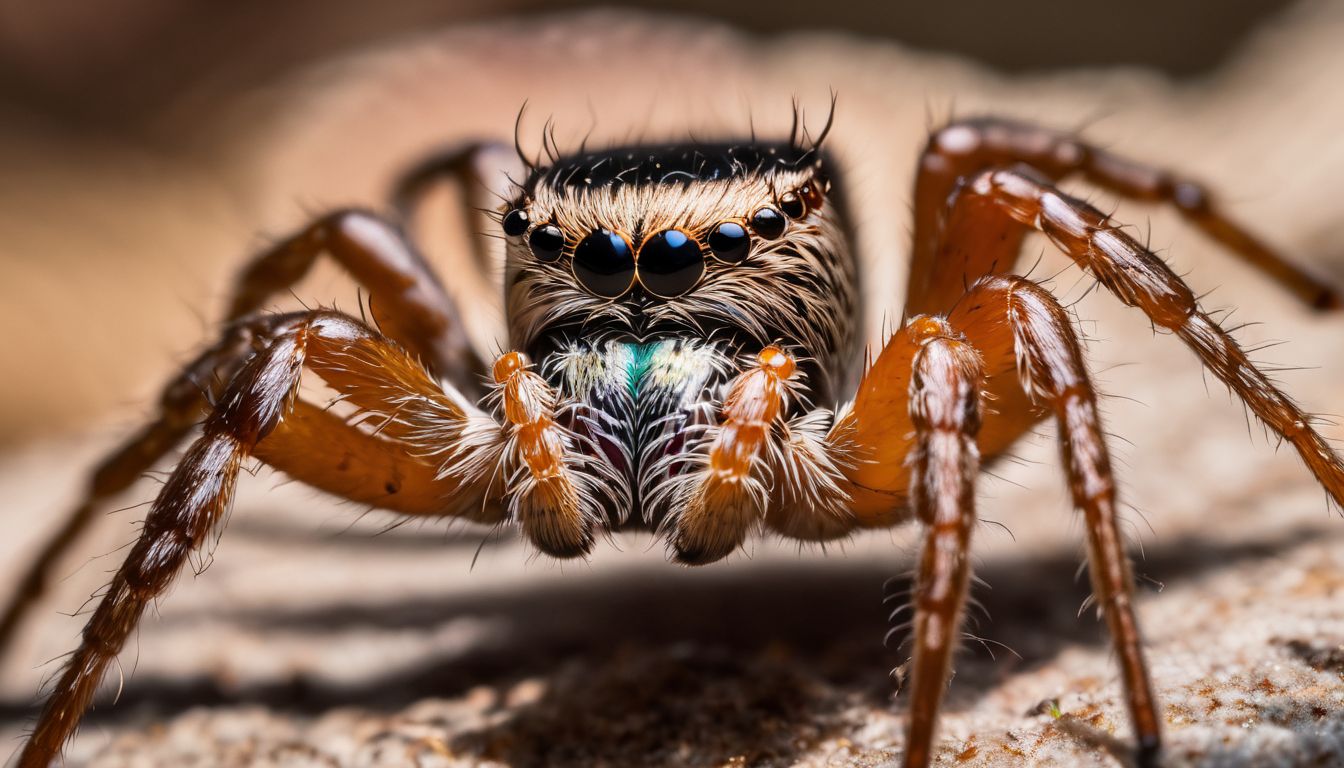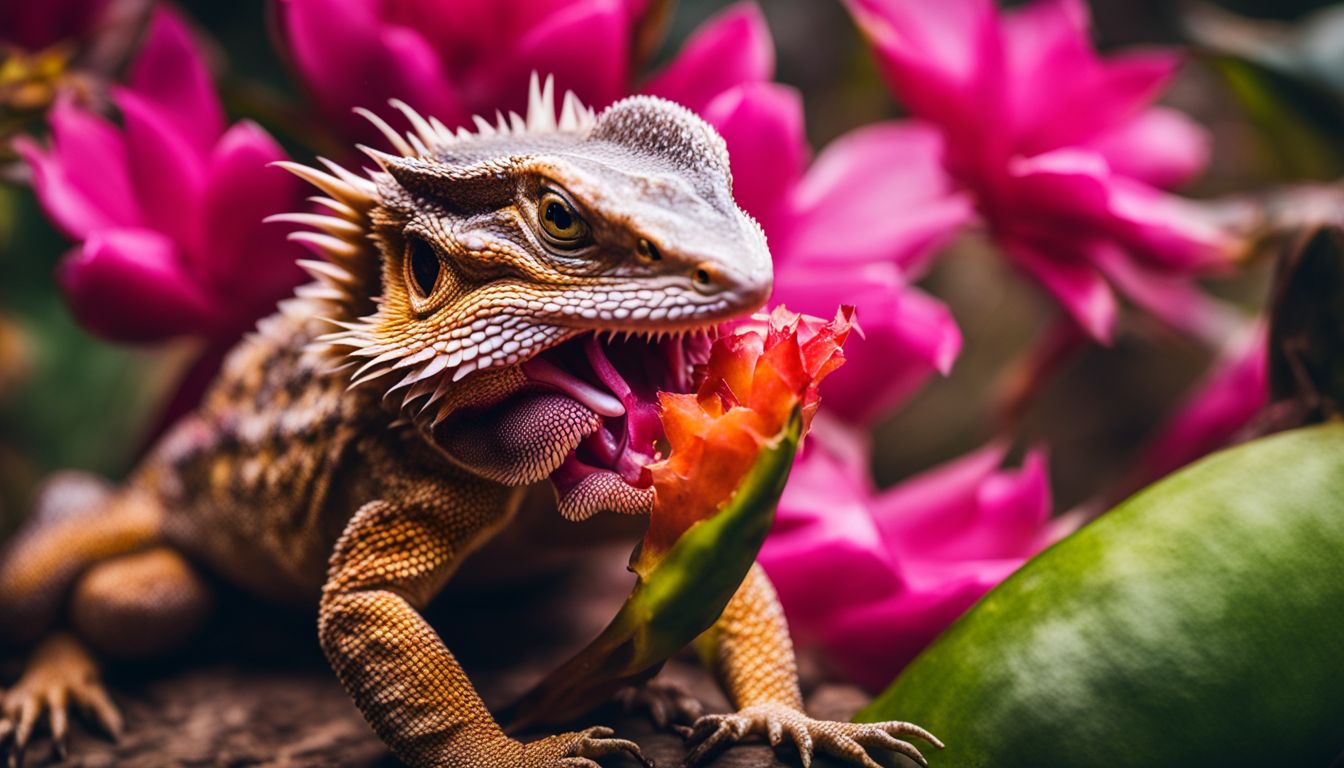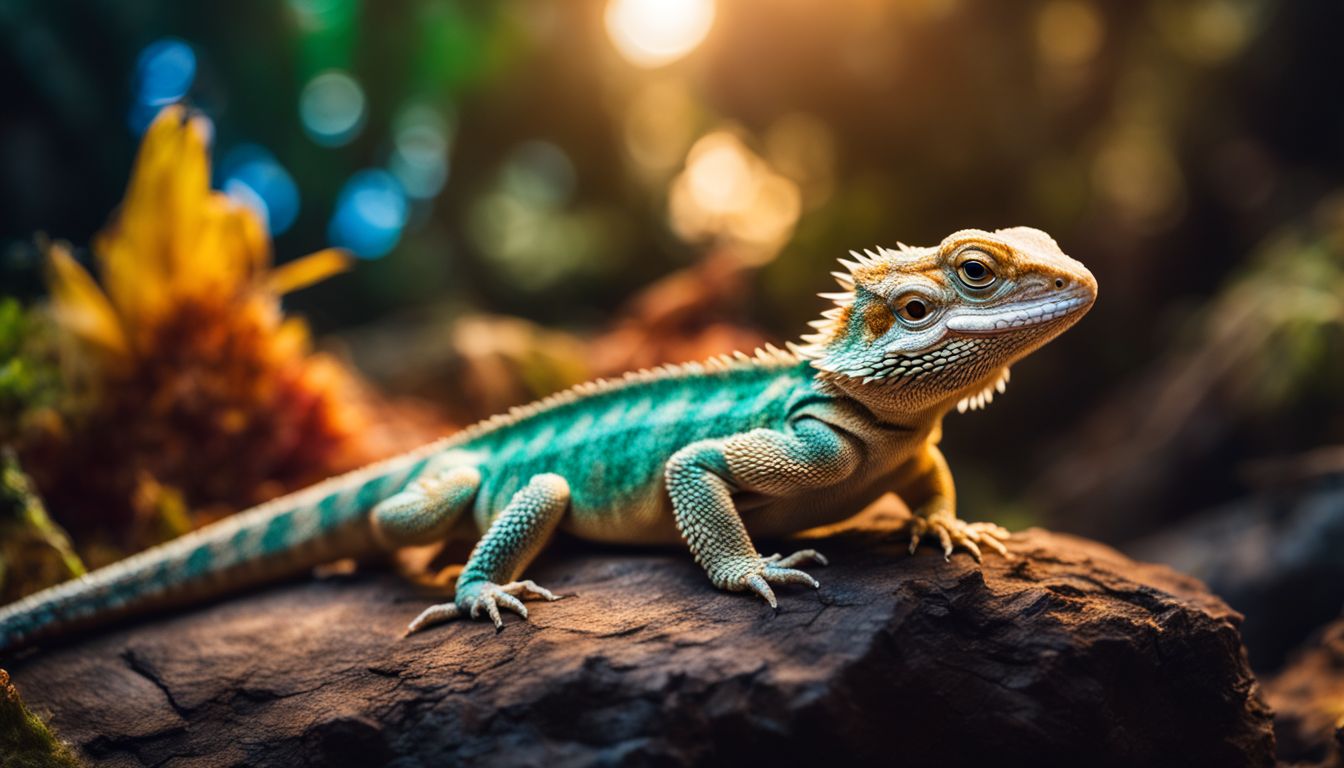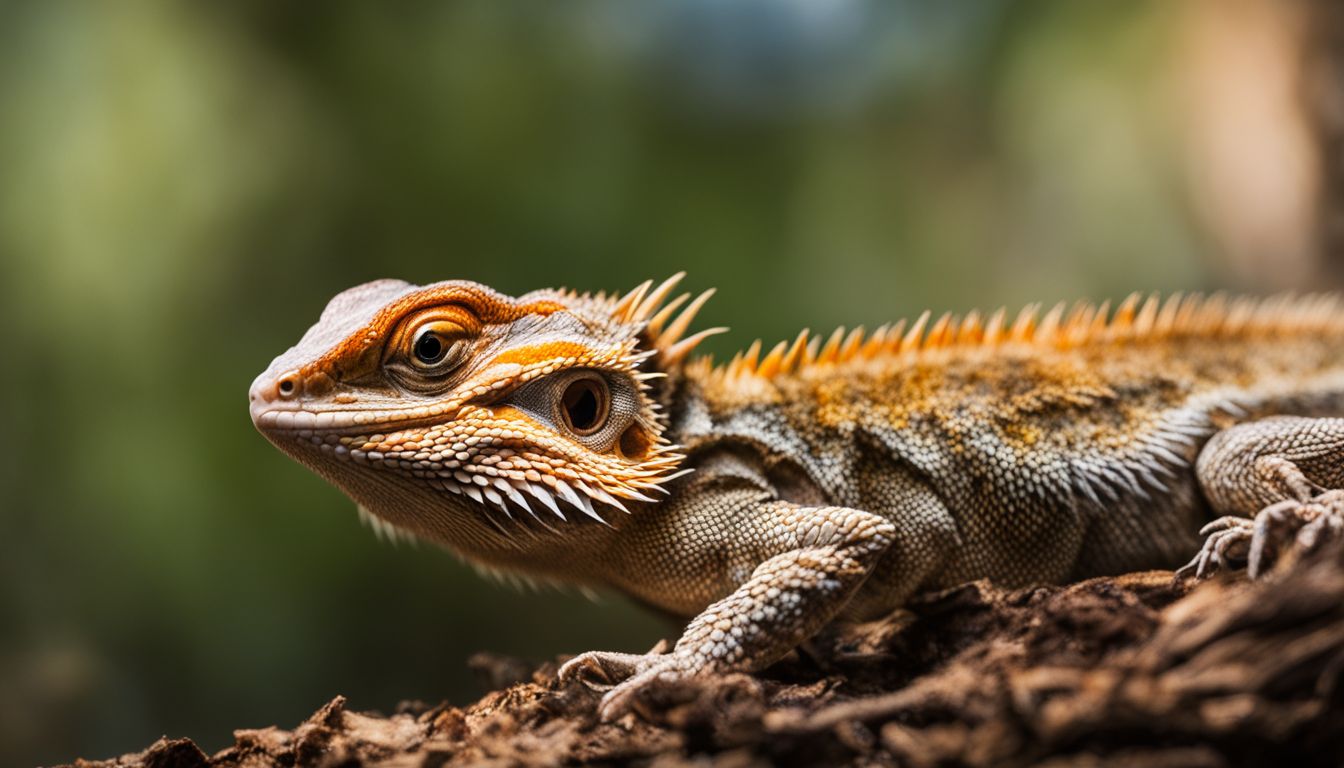Are you worried about ticks in your backyard? Spiders, nature’s skilled hunters, are known to catch and eat these pesky insects. In our blog post, we’ll explore the fascinating ways spiders contribute to keeping tick populations in check.
Discover the unsung heroes of pest control!
Key Takeaways
- Spiders, including giant Amazonian spiders and pseudoscorpions, are natural predators of ticks, contributing to controlling tick populations.
- While spiders play a crucial role in managing tick numbers by consuming them as part of their diet, there are also other natural predators such as birds, mammals (like opossums and guinea fowls), insects (like beetles in the Carabidae family), and arachnids that aid in keeping tick populations in check.
- Understanding predator – prey relationships between various species and creating suitable habitats can enhance natural tick control efforts. However, relying solely on spiders or any single predator may not be sufficient for effective tick management; a combination of natural predators is essential.
The Predator-Prey Relationship Between Spiders and Ticks
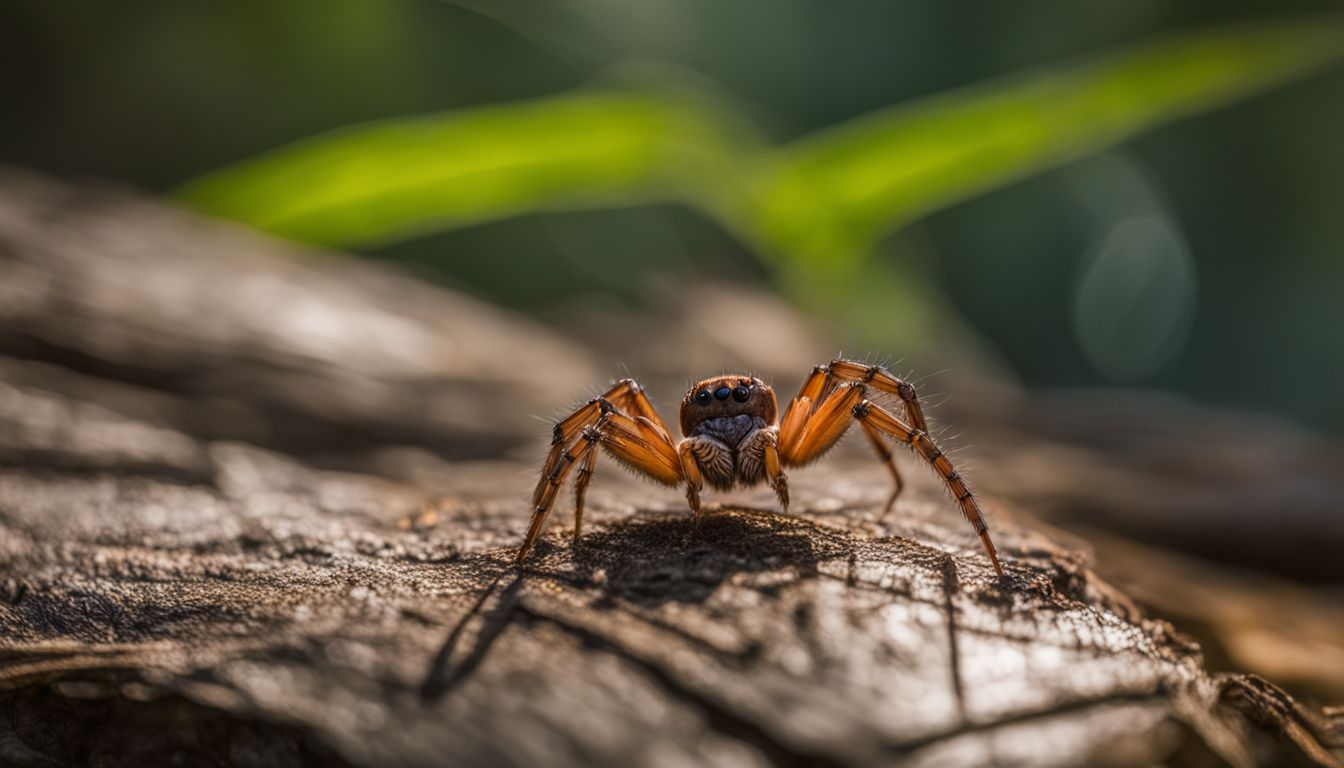
Spiders play a crucial role in controlling tick populations by preying on them as part of their natural diet. This predator-prey relationship helps to keep tick numbers in check and reduce the risk of tick-borne diseases.
Can Spiders Help Control Tick Populations?
Spiders might help us with ticks. They eat many pests and keep their numbers down. This includes ticks, which are close relatives of spiders. By hunting for food, spiders can catch and eat ticks that live in the same places they do.
A study found more trees could mean more spiders. With more spiders around, there could be fewer ticks since these eight-legged hunters might snack on them. Still, we need to learn how much spiders really affect tick numbers.
Now let’s see what kinds of spiders like to prey on these blood-sucking pests.
Which Spider Species Prey on Ticks?
Giant Amazonian spiders are big hunters that catch and eat ticks. They look for these tiny creatures and make them into meals. Another kind, known as pseudoscorpions, may not be true spiders but they’re close relatives.
These little guys are great at hunting ticks too.
Both of these spider types play a part in keeping tick numbers down. But we can’t just count on them to handle all tick problems. Next, let’s see how spiders use their skills in the wild to trap and eat ticks.
The Role of Spiders in the Ecosystem
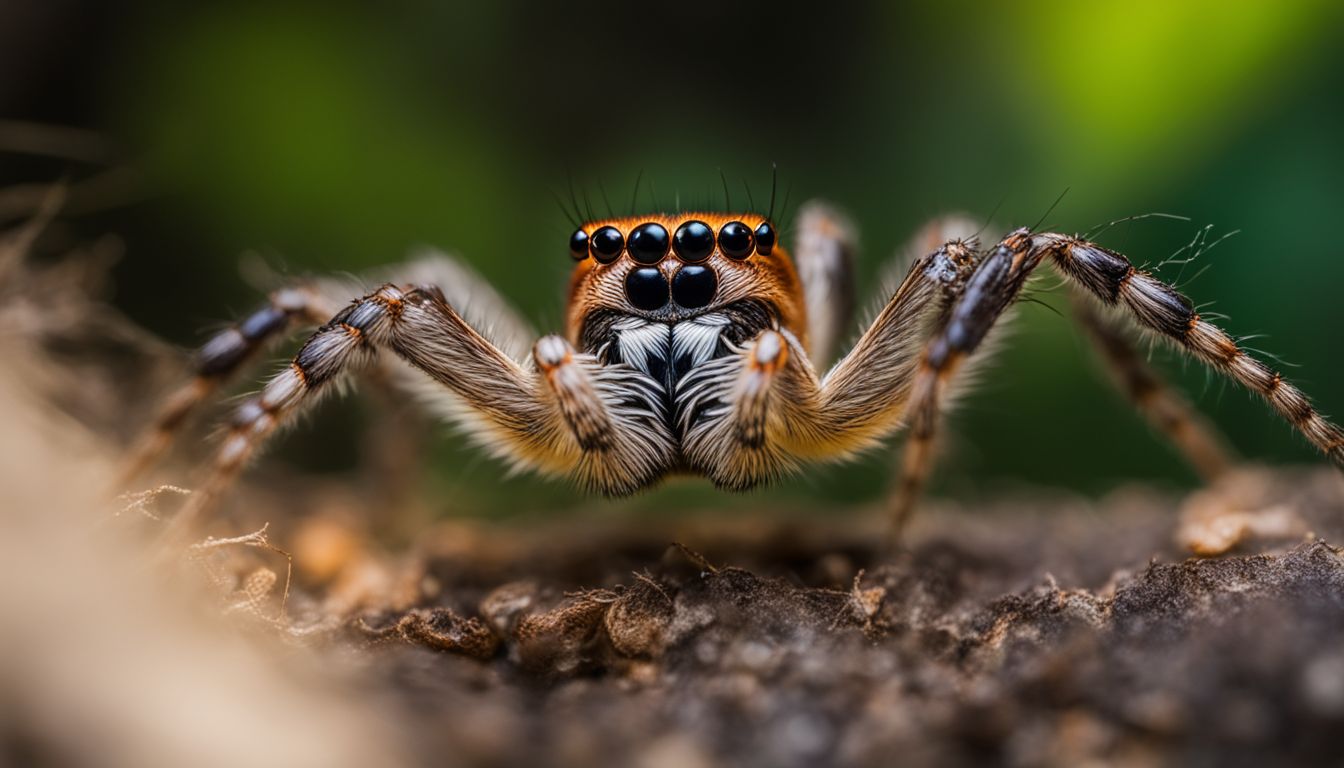
Spiders play a crucial role in controlling insect populations, including ticks, within the ecosystem. They capture and consume ticks as part of their natural diet, contributing to the overall balance of the environment.
How Spiders Capture and Consume Ticks
Some spiders spin webs to trap their prey, while others hunt or wait in ambush. Once a tick gets caught or comes close, the spider quickly grabs it. They use their sharp fangs to inject the tick with special enzymes that turn its insides into liquid.
Then the spider sucks up the liquid like a smoothie.
Spiders help control ticks by eating them, but they can’t get rid of all ticks everywhere. The way spiders eat varies from species to species. Some might stumble upon ticks as they go about their business, while others may target them more often.
Each spider eats only a small number of ticks, so they can’t stop diseases carried by ticks all on their own.
The Limitations of Relying on Spiders for Tick Control
Spiders can help control tick populations, but they have limitations. Spiders are not specialized tick hunters. They eat a variety of insects and cannot keep up with the high reproductive rate of ticks.
Also, spiders have long life cycles, making their impact slow in reducing tick numbers.
The limitations of relying on spiders for tick control show the need for a broader approach to managing ticks. Using other natural predators and implementing additional strategies like habitat modification can complement spider efforts in controlling tick populations more effectively.
Other Natural Tick Predators
Birds and fowl like wild turkeys, guinea fowl, and starlings are known natural predators of ticks. Additionally, insects and arachnids such as fire ants, ladybugs, and wolf spiders also play a role in controlling tick populations in the ecosystem.
Birds and Fowl: Feathered Tick Eaters
Ground-feeding birds like chickens, guinea fowl, and turkeys are helpful in controlling tick populations. They have a particular liking for deer ticks, which are known carriers of Lyme disease.
Turkeys, with their sharp eyesight and acute hearing, are especially talented at finding and eating ticks, playing an essential role in keeping tick numbers in check within their environment.
These feathered friends contribute to the natural biological control of ticks by preying on them as part of their omnivorous diet.
Within an ecosystem, these ground-feeding birds serve as valuable allies in managing tick populations. Interestingly enough, they show a preference for certain species of ticks – such as deer ticks – that pose a significant threat to human health due to their potential to spread Lyme disease.
Insects and Arachnids: Tiny Tick Hunters
Insects and arachnids, like spiders, play a vital role in controlling tick populations. Spiders are natural predators of ticks and help keep their numbers in check. Some spider species specifically target ticks as part of their diet, contributing to the overall balance of nature.
Ticks need to watch out for more than just other spiders; pseudoscorpions, related to spiders and scorpions, also feed on small insects and other arthropods including ticks and mites.
These tiny hunters serve as an important line of defense against tick overpopulation.
Mammals: Furry Allies in Tick Management
While insects and arachnids like spiders contribute to managing tick populations, mammals also play a crucial role in controlling these pests. Animals such as guinea fowls, opossums, and deer are natural predators of ticks.
They help keep the tick population in check by consuming them or grooming them off their bodies. For instance, guinea fowls are known to consume large numbers of ticks, reducing the risk of tick-borne diseases among humans and animals.
Similarly, other mammals like mice and squirrels aid in limiting the spread of Lyme disease by acting as hosts for ticks.
Enhancing Natural Tick Control
Creating Habitats for Tick Predators and understanding the limits of biological tick control can help in managing tick populations effectively.
Creating Habitats for Tick Predators
To create habitats for tick predators, consider planting native ground cover and grasses in your yard. Maintaining the right height of the grass and incorporating plants like golden comets or acorns can attract tick predators such as birds and spiders.
This encourages natural enemies of ticks to thrive, helping to control tick populations.
Understanding the importance of enhancing natural tick control through habitat creation can lead to a more balanced ecosystem where predatory species are encouraged to manage tick populations effectively.
Understanding the Limits of Biological Tick Control
Spiders and other natural predators play a role in controlling tick populations, but there are limitations to relying solely on them for tick management. Ticks have developed resistance to some natural control methods, making it challenging to achieve effective biological tick control in certain areas.
While promoting natural predators and parasites can help reduce tick populations, it may not be sufficient in highly infested environments or where ticks have developed resistance.
Biological control methods for ticks, such as using natural enemies or pathogens like nematodes and Metarhizium anisopliae, can help manage tick populations but may not provide complete eradication.
Conclusion
In the end, spiders play a crucial role in controlling tick populations. They catch and consume ticks, helping to manage their numbers. However, spiders are not the only predators of ticks; other animals also feed on these pesky parasites.
Enhancing natural tick control involves understanding the predator-prey relationships between various species and creating habitats to support these natural predators. Thus, while spiders do eat ticks, a combination of natural predators is essential for effective tick management.
)
Spiders are good at eating ticks and can help keep their population under control. Ticks are not insects but are related to spiders, scorpions, and mites. Other animals like opossums, squirrels, and rabbits also eat ticks.
Beetles in the Carabidae family are common tick predators too. Jumping spiders, house spiders, cobweb spiders, and pseudoscorpions feed on ticks as well. So there are many natural predators that help manage tick populations in different ecosystems.
While considering natural pest control methods, you might also be curious if typical home solutions are effective: find out whether vacuums can kill spiders as part of your household pest management strategy.
FAQs
1. Can spiders eat ticks?
Yes, some spiders like black widows and tarantulas may eat ticks if they catch them in their webs.
2. Are there other animals that eat ticks besides spiders?
Many animals, such as chickens like the Rhode Island Red and Brown Leghorns, guinea hens from the Galliformes group like Numida meleagris (also known as helmeted guineafowl), and wild birds like oxpeckers and woodpeckers, also snack on ticks.
3. What kind of habitats do ticks live in where they might meet predators?
Ticks live in places with lots of plants and grass, which are also home to predator creatures like black-legged ticks’ enemy – the western black-legged tick eater.
4. Do all kinds of spiders eat things other than bugs like fleas or whiteflies?
While many spiders are omnivores that will munch on different small insects including fleas or whiteflies, not every spider will choose to eat these specific bugs.
5. Can keeping certain animals help control tick problems naturally?
Yes! Animals such as poultry birds (like Guinea fowls) and certain insects can act as biological control agents by eating pests including ticks to help keep their numbers down without needing chemicals.
6. Besides living creatures, what else can be used to manage tick populations?
People sometimes use microbial pesticides – these are special types of germs that only hurt bad bugs like ticks but don’t harm good ones or pets like cats and dogs.

